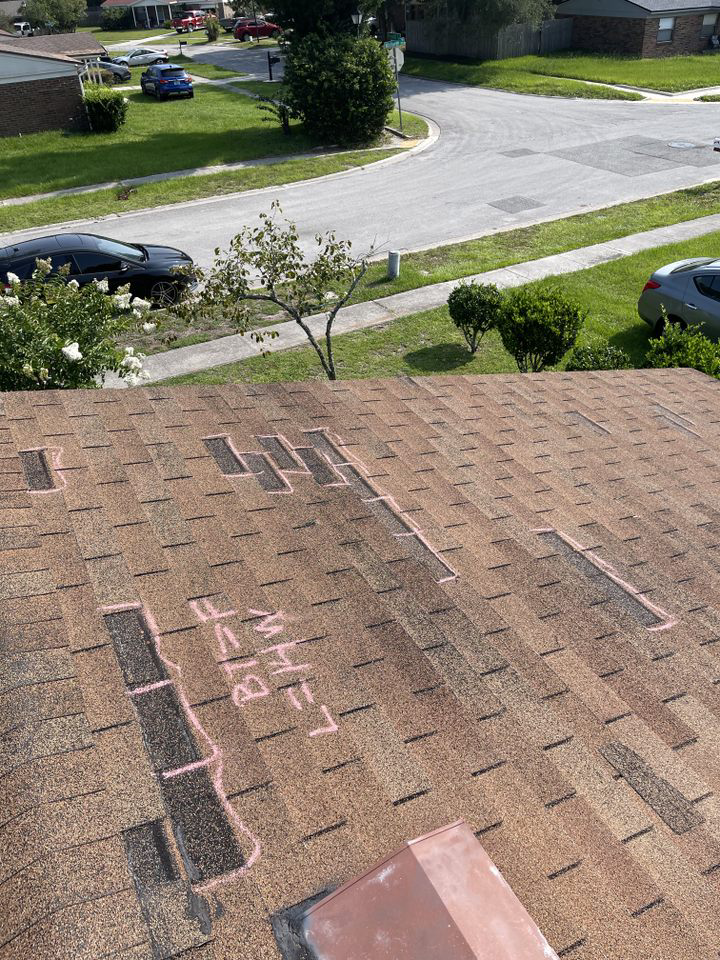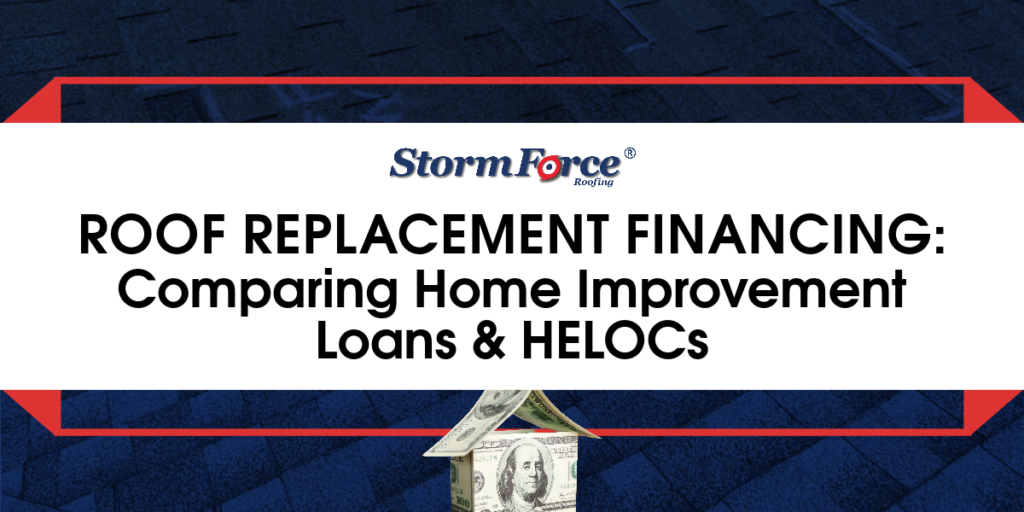Often, homeowners do not know what options exist when financing a roof replacement project. Consequently, they delay moving forward with the roof replacement or select a financially unfavorable lending alternative. Two primary options exist, and we compare them: home improvement loan vs. home equity line of credit (HELOC).

What Is A Home Improvement Loan And How Does It Work
A home improvement loan enables the homeowner to pay for home renovations. Broadly speaking, a home improvement loan is a class of many different lending options, which fall under two umbrella categories: secured and unsecured.
Secured home improvement loan options include a home equity loan, a HELOC, and a cash-out refinance. Secured home improvement loans require collateral. In most cases, if it has equity, the home is used as collateral to qualify for financing.
Unsecured home improvement loans include a personal loan or a credit card. These financing alternatives do not require collateral. However, a homeowner must meet specific creditworthiness metrics (i.e., a good credit score) to qualify.
For clarification, this informational article will compare and contrast the advantages and disadvantages of choosing an unsecured home improvement loan (i.e., a personal loan or credit card) versus a home equity line of credit (HELOC).
Defining A Home Equity Line Of Credit (HELOC)
A home equity line of credit, or HELOC, functions as a second mortgage. Lenders determine the amount a homeowner can borrow by evaluating the amount of home equity, which is the home’s market value less the outstanding mortgage balance. Suppose sufficient home equity exists to justify issuing a HELOC. In that case, the lender creates an account with the principal amount of the HELOC established.
This account enables the homeowner to withdraw funds as needed throughout the HELOC draw period – typically 10 years. The homeowner can also repay the outstanding balance to replenish the amount of available credit. A repayment period, typically 20 years, begins after the draw period. Interest rates are generally variable. However, some lenders have fixed-rate options.
The Advantages Of Financing A Roof Replacement With A Home Improvement Loan (Unsecured Financing)
Unsecured financing remains a viable option for the borrower who has limited or no access to equity in their home. In this respect, the homeowner does not jeopardize losing the home because there is no risk of foreclosure if they fail to repay the home improvement loan.
Since a home improvement loan does not require collateral, the homeowner must demonstrate creditworthiness to secure financing. A homeowner with a strong credit history likely will receive favorable terms. Typically, repayment terms are set forth monthly on a specific and predictable timetable.
The Benefits Of Using A HELOC (Secured Financing) To Finance A Roof Replacement

Defining A Home Equity Line Of Credit (HELOC)
A home equity line of credit, or HELOC, functions as a second mortgage. Lenders determine the amount a homeowner can borrow by evaluating the amount of home equity, which is the home’s market value less the outstanding mortgage balance. Suppose sufficient home equity exists to justify issuing a HELOC. In that case, the lender creates an account with the principal amount of the HELOC established.
This account enables the homeowner to withdraw funds as needed throughout the HELOC draw period – typically 10 years. The homeowner can also repay the outstanding balance to replenish the amount of available credit. A repayment period, typically 20 years, begins after the draw period. Interest rates are generally variable. However, some lenders have fixed-rate options.
Comparing And Contrasting: Home Improvement Loan Vs. HELOC
When considering which option to select, the homeowner benefits from performing an exhaustive analysis of the financing alternatives. This evaluation may include contacting several lenders, such as banks, credit unions, credit card companies, and other borrowing institutions, to determine which direction to choose.
The homeowner should consider their willingness to access equity (if they have any equity in the home), their credit history (including their credit score), and their ability to repay. A homeowner with a demonstrated history of consistently and timely making repayments on debt may prefer unsecured financing.
Most importantly, the homeowner must understand how much they need to borrow to replace a roof. Assuming they have an estimate for the roof replacement, they should use this amount to determine the viability of each alternative. They also could augment or utilize both options if qualified (and necessary).
Working With A Roofing Company When Financing A Roof Replacement
A reputable roofing company understands that most homeowners need to access a lending source when replacing a roof. Because the expense to remove and replace a roof is significant, only some homeowners have sufficient liquid funds to afford such an endeavor without securing some form of financing.
At StormForce Roofing, we offer a viable and affordable financing solution to help homeowners in Jacksonville, FL, and surrounding areas access funds to replace their roofs. Our favorable terms allow you to take advantage of low interest rates and spread payments over time rather than as an upfront payment.
To learn more about any of our roofing services or to schedule an appointment, contact StormForce Roofing today.
